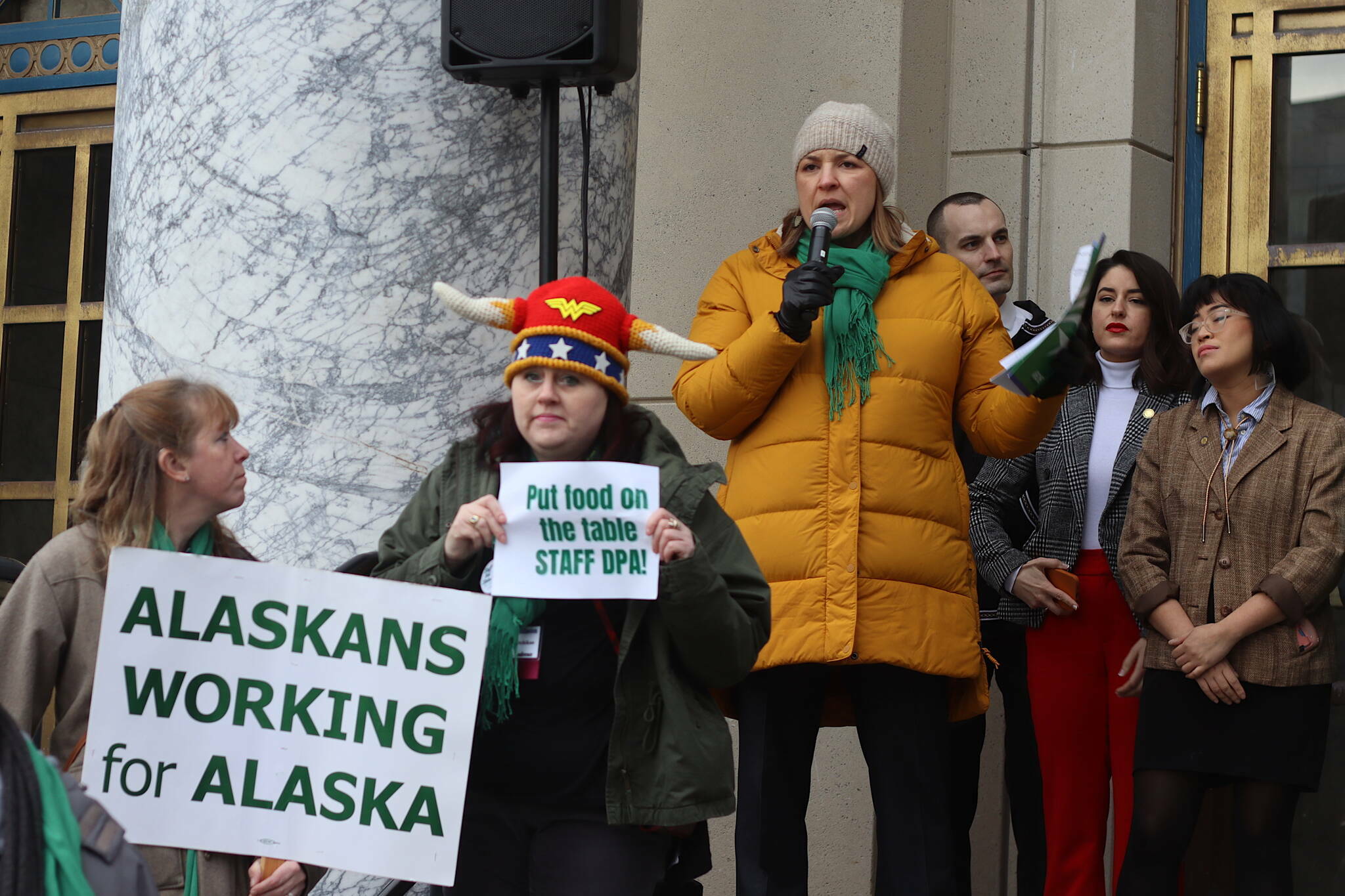Every two weeks, Alaska Division of Payroll Services staff review and process 14,000 timesheets. This includes complex adjustments to earnings that control recruitment bonuses, overtime pay, and promotions for employees at every level of state government. Seventy-five personnel are needed for payroll to run smoothly. As of Sept. 10, only 37 people are employed at Payroll Services, making an already complicated job a nearly impossible task.
The payroll section is one of several state agencies in crisis. As public program failures like SNAP benefits make headlines for the burden they place on Alaskans, hardships are also multiplying for state workers who count on timely and accurate paychecks. The departmental emergencies themselves reflect a problem that must be addressed with long-term solutions. We appreciate that, at Gov. Mike Dunleavy’s request, the Alaska Legislature appropriated funds for a comprehensive wage study. Last week the state announced a request for salary study proposals, but action is long overdue and implementation of its findings will take years and political will — two things our members can’t afford.
Simple economics is the primary reason the state can’t recruit and retain qualified employees in payroll, public assistance, probation, and fish and game, among other agencies. The state has effectively negotiated against itself when bargaining with unions by not paying wages that attract eligible employees and sustain the career goals of the people it hires. Understaffing adds increased pressure and demoralization from doing the work of another (or a third!) position in the time provided to do your own. Factor in retirement insecurity, a concern of most public employees hired after a retirement pension was eliminated in 2006, and you can imagine why state workers don’t see a future working for the State of Alaska.
The Administration has floated circumstantial explanations for short staffing that do not reflect the systemic failures of state agencies. Alaskans have also grown suspicious of “COVID” or “supply chain” excuses for broken public services. The only supply chain issue facing Alaska today is the underinvestment in wages and benefits to attract and retain qualified public employees. We need the leadership to fill vacant positions today and the foresight to develop a generation of career-minded state workers to avoid further degradation of public services.
The Administration, however, is still learning to read the room. Instead of increasing wages for payroll staff — a strategy that has worked successfully in other state sections — the State has decided instead to contract out payroll staff’s work. Recent reporting by the Alaska Beacon revealed that the State of Alaska has agreed to pay a Canadian company twice as much ($45.50/hour) per employee than they pay for state employees to do the same job ($22.69/hour or around $36.50/hour for a loaded rate that includes benefits). The article also noted that the state had suspended wage adjustments already approved in letters of agreement (LOAs) with labor unions, blaming these LOAs for overloading payroll employees and contributing to a 35% vacancy rate. You don’t need to be a union organizer to recognize this playbook: starve the system, blame the system, outsource the system.
If the state is serious about solving chronic understaffing across departments, proposals including across-the-board increases to base pay should be on the table. At Ted Stevens International Airport, the Department of Transportation and Public Facilities was faced with huge vacancies. After the state agreed to a wage increase for snow removal staff, workers applied for vacant positions and the positions were filled.
The Confidential Employees Association (CEA) has made earnest proposals to the Department of Administration to resolve the crisis in Payroll Services. The state claims it does not have the money to implement pay increases — but that doesn’t bear to reason. Aside from the 5 to 10 percent vacancy factor built into the governor’s budget, dozens of vacant positions in Payroll Services are fully funded yet empty, leaving the Administration with broad discretion to fill those positions.
Alaskans understand that quality public services exist when qualified people are hired to provide them. The time has come to reinvest in state employees by paying competitive wages that keep up with inflation, to restore a defined benefit (pension) retirement, and to end a tolerance for understaffing and a predisposition to outsource services to out-of-state contractors. Years in the making, the state’s recruitment and retention crisis has cored out emerging career employees from joining the backbone of the public workforce at the expense of all Alaskans. Our public employees deserve better, and Alaska deserves better.
Heidi Drygas serves as executive director for ASEA/AFSCME Local 52. She served as the commissioner of Labor and Workforce Development under Gov. Bill Walker from 2014-2018, and was a candidate for lieutenant governor in 2022. She was born and raised in Fairbanks.
Jeff Kasper serves as business manager for APEA/AFT. He spent 17 years in public service for the State of Alaska. He lives in Juneau.
Jordan A. Adams serves as business manager/secretary-treasurer for Public Employees LIUNA Local 71, and as chair of the Local 71 Health Trust. He represents Laborers members employed employees statewide. He was born and raised in Nenana.
All three represent employees statewide who perform direct services upon which Alaskans depend every day.



